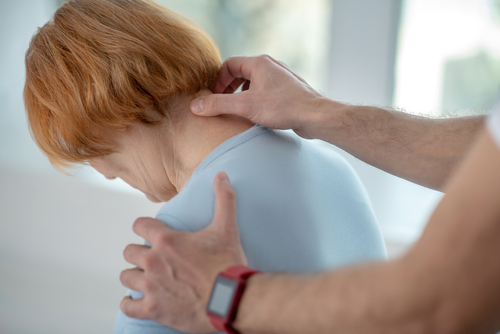The spine is one of the most extensive and complex structures in the body, but it’s also a source of many of the aches and pains that people experience.
There’s no doubt that many people deal with spine-related problems that lead to pain. Medical research shows that up to 33% of people are living with back pain at any given time. Also, up to 50% of people experience neck pain every year. Both of these types of pain are often caused by a spinal problem called a herniated disc, and physical therapists can help you reduce the symptoms herniated discs can cause.
What symptoms can herniated disc physical therapy help address?
A herniated disc occurs when one of the spinal discs between the vertebrae becomes deformed or damaged. This issue can occur anywhere along the spine. However, it most commonly happens in the neck and lower back or lumbar region. A few of the symptoms that herniated discs typically cause and that physical therapy can help address include:
- Pain and numbness that’s typically felt on one side of the body, runs down your arm or leg, or worsens when you move in specific ways.
- Muscle weakness that isn’t normal for you.
- Tingling, aching, or burning sensations in the neck or lower back.
How can a physical therapist address your herniated disc symptoms?
After assessing your condition, a physical therapist can create a customized plan to address your symptoms and their underlying cause. For herniated disc sufferers, such a plan may include:
- Active Release Techniques® — Knots of tension in soft tissue, or adhesions, can be a contributing factor that is worsening your herniated disc symptoms. They can also be one of the reasons you developed a herniated disc in the first place. Physical therapists can use Active Release Techniques to help break up adhesions. In turn, this can improve spinal mobility and flexibility, which can help ease herniated disc symptoms.
- Graston Technique® — Soft tissue tension that can’t be addressed with Active Release Techniques or other hands-on techniques may benefit from the Graston Technique. This involves a physical therapist applying pressure to the affected area. However, they use specially designed tools to do so rather than just their hands. More pressure can be applied to the problem area as a result.
- Functional rehabilitation — Physical therapists don’t just want to treat your symptoms. They also want to be sure that your body is ready to handle all the normal daily tasks you have to perform. Functional rehabilitation is intended to help build up your strength and flexibility. It can also help get your body used to the movements it has to do while working, playing sports or just going about your day.
Get in touch with the physical therapists at SOL PT for help with your herniated disc
Are you living with a herniated disc? Our SOL Physical Therapy team is ready and willing to help you deal with this problematic condition. We can evaluate your back or neck to determine if a herniated disc is causing your symptoms. In addition, our dedicated physical therapists can build you a treatment plan that’s unique to your condition and recovery goals.
Contact our team today for more information about how we can address herniated discs or to schedule your initial appointment to begin addressing your injury.


